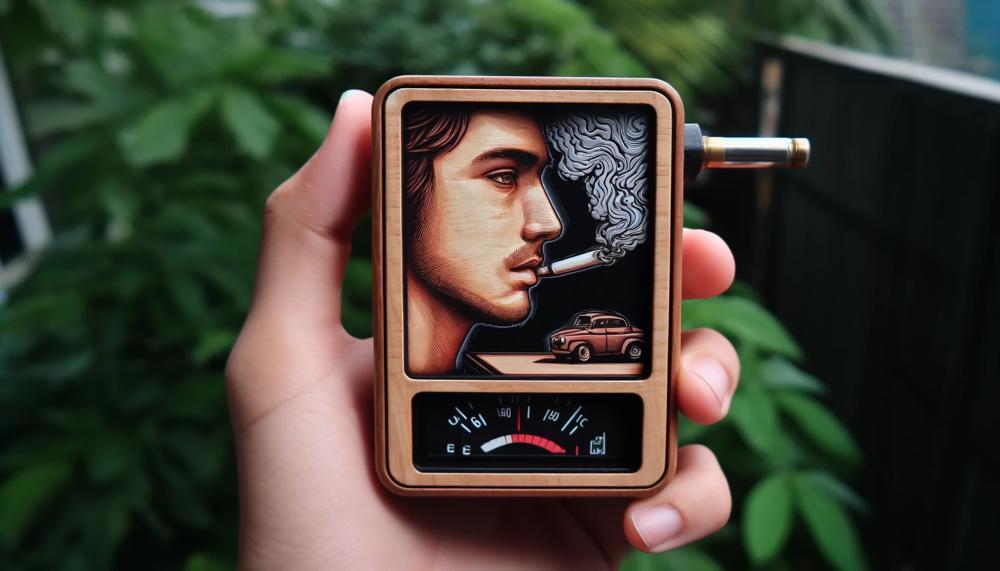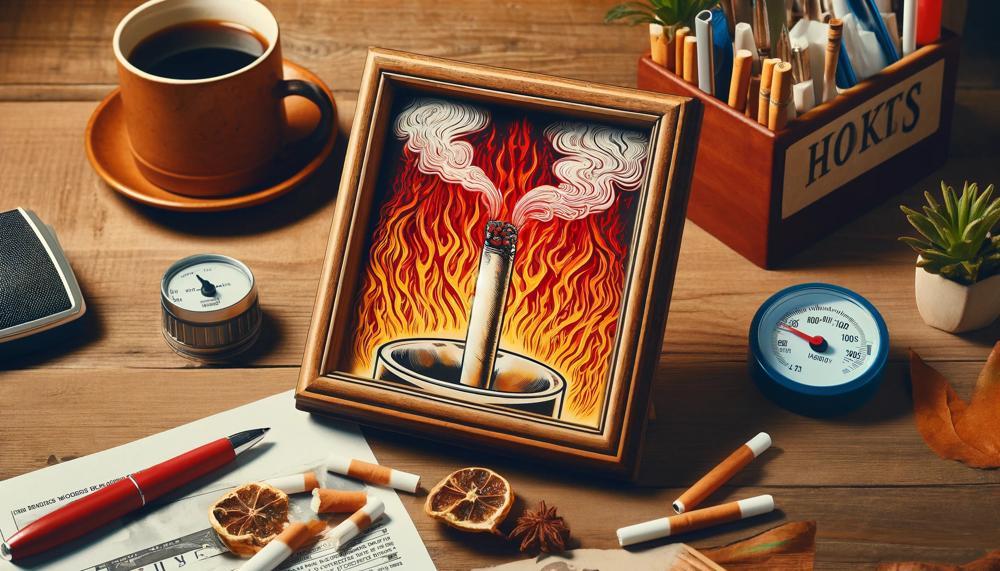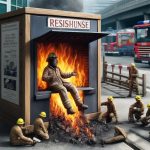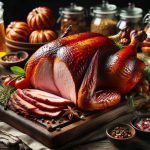Imagine this: it’s the weekend and you’re ready for a mouth-watering barbecue feast. You’ve put in the time and effort to select the best cuts of meat, marinate them just right, and fire up your trusty smoker. But as you eagerly check on your food, you notice that the temperature just isn’t rising like it should.
Before you start panicking and giving up on your barbecue dreams, let’s take a closer look at what might be causing your smoker to not heat up properly. From equipment malfunctions to simple mistakes, there are several potential reasons behind this frustrating problem. So, why is my smoker not getting hot?
There could be several reasons why your smoker is not getting hot:
- Insufficient Coal: There might not be enough coal in the firebox.
- Vents Not Fully Open: The intake vents might not be open enough.
- Wet Wood or Charcoal: The wood or charcoal might be damp.
- Frequent Lid Opening: If the lid of the smoker is being opened too frequently, it can cause the hot air to escape and let the cold air inside.
- Damaged Surface: The surface of the smoker might be damaged.
- Cold Weather: The weather outside might be too cold, causing the metal on the smoker to freeze.
- Overfilled Smoker: Placing too much food in the smoker can cause the temperature to drop.
- Ash Build-Up: Ash build-up can prevent airflow and choke the fire.
So, let’s get started.
Contents
- 1 How Hot Should Your Smoker Be?
- 2 Common Factor That Affects Temperature of All Smokers
- 3 Electric Smoker Not Getting Hot Enough: Why and How to Solve?
- 4 Propane Smoker Not Getting Enough: Why and How to Solve?
- 5 Charcoal Smoker Not Getting Enough: Why and How to Solve?
- 6 Tips to Maintain Smoker Temperature
- 7 Conclusion
How Hot Should Your Smoker Be?
Achieving and maintaining the ideal temperature range for a smoker, which is approximately 225°F (107°C) for at least 4-8 hours, is crucial for perfectly smoked meat. To achieve this, it is important to regulate the intake and exhaust dampers to generate a steady flow of blue smoke. Accurately measuring the internal temperature using air probe thermometers is also essential.
To retain heat and humidity, utilizing a water pan inside the chamber can be beneficial. Additionally, placing the smoker in a sheltered area or using a windbreaker structure can protect against any disturbances caused by wind.
For longer periods away from the smoker, aiming for a lower cooking temperature of around 200°F and using larger chunks of wood can help maintain heat for an extended period. Avoid frequently opening the chamber, as this will disrupt the cooking temperature. Instead, make adjustments gradually and with careful consideration.
Common Factor That Affects Temperature of All Smokers
There are several common factors that can hinder a smoker’s ability to reach optimal temperatures. These can include anything from airflow restrictions to inadequate fuel and unfavorable weather conditions. Poor quality equipment and user error can also play a role in this setback.
As any experienced smoker knows, achieving the perfect temperature is crucial for producing mouth-watering, tender meats. However, these common obstacles can prevent even the most skilled pitmasters from achieving their desired results.
One factor that can significantly affect the temperature of all smokers is airflow restrictions. When smoke and heat cannot flow freely, it can lead to uneven temperatures and hot spots, resulting in undercooked or overcooked meat. This can be caused by a variety of factors, such as clogged vents, dirty grates, or poorly designed equipment. To ensure proper airflow, regular maintenance and cleaning are essential.
Insufficient fuel is another common culprit for smokers not reaching optimal temperatures. Without enough fuel, the smoker cannot generate the necessary heat to cook the meat properly. This can happen if the smoker is not filled with enough charcoal or wood chips or if the fuel source is damp or low quality. To avoid this issue, always make sure to have enough fuel on hand before starting a smoking session.
Weather conditions can also have a significant impact on a smoker’s temperature. Cold or windy weather can cause heat loss and make it challenging to maintain consistent temperatures. Similarly, high humidity levels can make it difficult for the smoker to reach and maintain high temperatures. To combat these effects, consider investing in a smoker insulation blanket or choosing a sheltered location for your smoking setup.
Lastly, poor quality equipment and user error can also contribute to temperature issues with smokers. Low-quality smokers may not be able to maintain consistent temperatures or may have faulty temperature gauges. Additionally, inexperienced users may struggle with controlling the smoker’s temperature and end up with overcooked or undercooked meat.
Electric Smoker Not Getting Hot Enough: Why and How to Solve?
If your electric smoker fails to reach the desired temperature, it can be frustrating and impact the quality of your food. There are multiple potential causes for this issue, but fortunately, there are steps you can take to resolve it.
Potential Reasons for Electric Smoker Not Getting Hot Enough:
- Insufficient Power Source: One common reason for an electric smoker not reaching the desired temperature is an inadequate power source. Ensure that your smoker is properly plugged in and receiving enough electricity.
- Damaged Heating Element: The heating element is responsible for providing heat in your smoker. If it is malfunctioning or damaged, it can hinder your smoker from getting hot enough. Examine the heating element carefully and replace it if needed.
- Incorrect Temperature Settings: Double check your temperature settings to ensure they are set correctly. Adjust if needed to achieve the desired temperature.
- Low Fuel Supply: If you are using an electric smoker with a charcoal tray, make sure you have enough fuel to generate and maintain heat.
- Poor Insulation: Inadequate insulation can cause heat to escape and prevent your smoker from reaching the desired temperature. Consider investing in a better insulated smoker or adding extra insulation to your current one.
- Unclean Smoker: A dirty smoker can also impact its performance. Make sure to regularly clean your smoker, especially the heating element and vents, to ensure proper heat distribution.
- Closed Intake Vents: Check that your intake vents are open enough to allow sufficient airflow into the smoker. Closed vents can restrict airflow and prevent your smoker from getting hot enough.
- Insufficient Charcoal: If you are using a charcoal tray, make sure you are using enough charcoal to generate and maintain heat throughout the smoking process.
Steps to Resolve Electric Smoker Not Getting Hot Enough:
- Check Power Source: Confirm that your smoker is properly plugged in and receiving adequate electricity.
- Inspect Heating Element: Carefully examine the heating element for any damage or malfunction and replace if necessary.
- Adjust Settings: Make sure your temperature settings are correct and adjust if needed.
- Add More Fuel: If using a charcoal tray, add more fuel to generate and maintain heat.
- Improve Insulation: Consider investing in a better insulated smoker or adding extra insulation to your current one.
- Clean Your Smoker: Regularly clean your smoker, paying special attention to the heating element and vents.
- Check Intake Vents: Ensure your intake vents are open enough to allow sufficient airflow.
- Use Enough Charcoal: If using a charcoal tray, make sure you are using enough charcoal to generate and maintain heat throughout the smoking process.
Propane Smoker Not Getting Enough: Why and How to Solve?
There are numerous common reasons why a propane smoker may not be reaching the desired temperature. These include inadequate oxygen supply, adding meat too soon, cracks and leaks, a faulty temperature gauge, frequent lid openings, cold weather conditions, insufficient fuel, damp wood chips, loose chip tray or burner tubes, and a damaged or leaking propane tank.

To solve these issues and achieve the desired temperature for your propane smoker, here are some potential solutions:
- Ensure proper ventilation and monitor oxygen levels by keeping vents open and adjusting them as needed.
- Wait until the smoker reaches a consistent temperature before adding meat to ensure even cooking.
- Repair any cracks or replace damaged seals to prevent cold air from entering the smoker. Consider using a thermal blanket for colder weather conditions.
- Use a reliable thermometer instead of relying on the built-in gauge for more accurate readings. Also, try to avoid frequently opening the lid during the smoking process.
- In colder temperatures, use additional charcoal to help reach the desired temperature faster. Be sure to closely monitor fuel levels during the smoking process.
- Use dry wood chips instead of damp ones, as they can help raise the temperature more quickly. Consider upgrading to higher quality wood chips if necessary.
- Clean and properly attach the chip tray and burner tubes to maintain heat. You can use an air compressor or thin wire for thorough cleaning.
- Check for leaks in the propane tank and replace it if needed. In colder weather conditions, be sure to unfreeze the regulator if necessary.
Charcoal Smoker Not Getting Enough: Why and How to Solve?
There are a variety of potential causes for a charcoal smoker not getting enough heat, which can lead to uneven cooking or a longer cooking time. These include inadequate airflow, poor quality charcoal, improper coal placement, and poor ventilation.
To address these issues and ensure your smoker is running at its best, there are several effective solutions you can try.
One common reason for inadequate heat in a charcoal smoker is insufficient airflow. To combat this, you should clean out the vents and make sure they are fully open. This will allow for better air circulation and improve the temperature in your smoker.
Another factor that can affect heat output is the type of charcoal you use. Low-quality lump charcoal or briquettes not designed for smoking can result in weaker heat and inconsistent temperatures. To avoid this issue, invest in high-quality charcoal specifically made for smoking purposes.
Improper coal placement can also contribute to a lack of heat in your smoker. To optimize temperature control, arrange your coals in a two-zone fire and rotate the meat throughout cooking to prevent hot spots. Additionally, make sure your smoker has at least two vents for proper ventilation and avoid overcrowding with too much meat.
It’s important to regularly check your smoker for cracks or leaks that could be affecting its performance. If any are found, repair them promptly to maintain optimal heat levels.
Using a reliable thermometer is essential for monitoring the temperature inside your smoker accurately. This will help you make adjustments as needed to achieve your desired cooking results.
In colder weather, it may be necessary to add extra fuel to maintain consistent heat levels. And when using wood chips, be sure they are dry to ensure consistent heat output.
To keep your smoker running smoothly, regularly clean and attach the chip tray and burner tubes. And if using a propane smoker, always check for leaks in the propane tank before use.
Tips to Maintain Smoker Temperature
Maintaining a stable and precise temperature in your smoker is essential for achieving perfectly cooked BBQ. To help you achieve this goal, here are some simple and effective tips for maintaining the temperature in your smoker:
- Adjust the Air Vents: The intake and exhaust dampers are key components in regulating heat levels in a smoker. It is crucial to adjust them before reaching the desired temperature to avoid overshooting.
- Use a Dedicated Thermometer: Built-in thermometers can be unreliable, so it is best to use a dedicated thermometer to monitor the internal temperature of your smoker accurately.
- Shield from Wind: Wind can disrupt the airflow in a smoker, resulting in unstable heat levels. To prevent this, position your smoker in a sheltered area or use windbreakers to maintain consistent temperatures.
- Utilize a Water Pan: Placing a water pan inside the smoker can help stabilize heat levels and add humidity, resulting in juicy and flavorful meat.
- Limit Opening the Chamber: Avoid frequently opening the chamber as it can cause heat and smoke to escape, disrupting the cooking temperature.
- Adjust Vents Slowly: When making adjustments to the vents, do so gradually instead of quickly shutting them. This will prevent filling the chamber with thick smoke and ensure a more controlled temperature.
- Aim for Lower Temperature when Unattended: If you need to leave your smoker unattended, set a lower cooking temperature and use larger wood logs instead of chips to maintain consistent heat levels.
Conclusion
Remember that keeping the right temperature is the key to getting juicy, delicious meats from your grill.
But there are a number of things that can make it less effective. Because of things like poor airflow, choosing the wrong fuel, and human error, it is important to maintain and fix your smoker on a regular basis to keep the temperature stable.
By following these tips and tricks, you’ll be able to handle any problems and continue to enjoy delicious BBQ meals with perfectly smoked meats.






